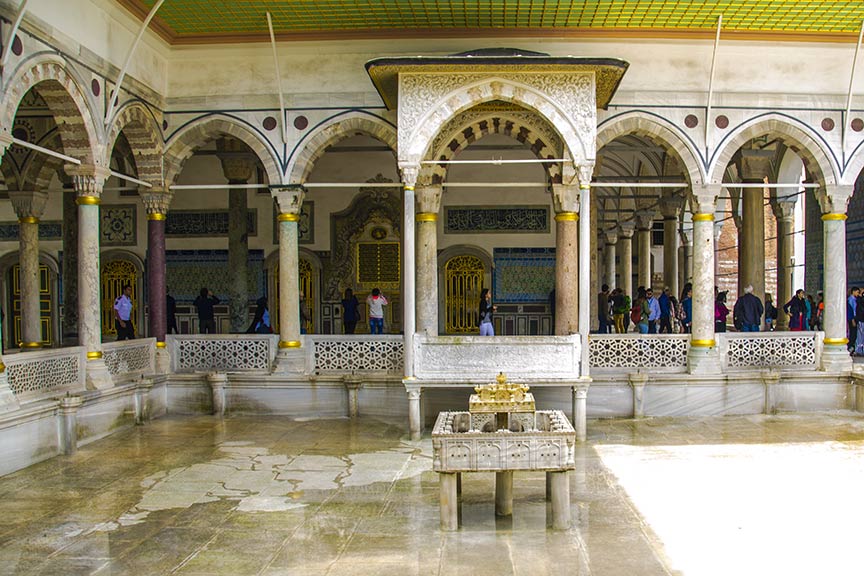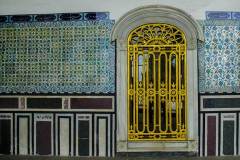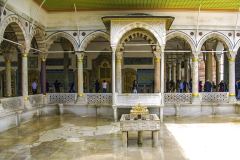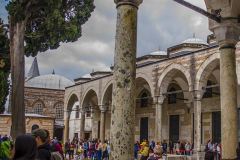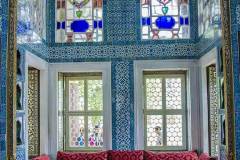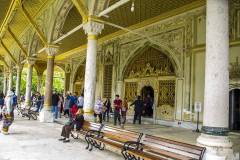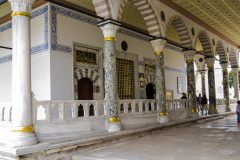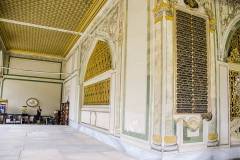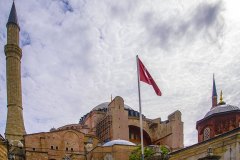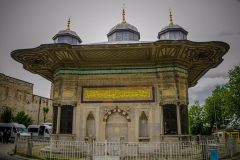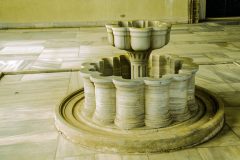Topkapi Palace is located in Istanbul, Turkey. It is situated in the historical peninsula of Istanbul, on the European side of the city, between the neighborhoods of Sultanahmet and Eminonu. The palace is located on a hill overlooking the Golden Horn, the Bosphorus, and the Sea of Marmara. Its address is Cankurtaran Mahallesi, Topkapi Sarayi, Istanbul, Turkey.
Topkapi Palace is a historical palace located in Istanbul, Turkey. It was built in the 15th century by Mehmed II, who was the Ottoman Empire’s seventh sultan. The palace was the primary residence of the Ottoman sultans for nearly 400 years until the 19th century.
Topkapi Palace is a significant cultural and historical landmark in Istanbul and a major tourist attraction. It covers an area of approximately 700,000 square meters and consists of several buildings, including the Imperial Treasury, the Harem, and the Palace Kitchens. The palace also has four courtyards and a number of gardens.
The Imperial Treasury houses some of the most valuable and precious objects in the Ottoman Empire, including the Topkapi Dagger and the Spoonmaker’s Diamond. The Harem was the private living quarters of the sultans and their families, and it features lavish decorations and architecture.
Today, Topkapi Palace is a museum that attracts millions of visitors every year. It offers a glimpse into the opulent lifestyle of the Ottoman sultans and their court, and is a must-see destination for anyone visiting Istanbul.
Inside Topkapi Palace, visitors can explore a variety of buildings and exhibits that offer a glimpse into the daily life of the Ottoman sultans and their court. Here are some of the highlights:
- Imperial Council Chamber: This room was the place where the Ottoman sultans held meetings with their advisors and discussed important matters of state.
- Imperial Treasury: This building houses some of the most valuable objects in the Ottoman Empire, including the Topkapi Dagger, the Spoonmaker’s Diamond, and the emerald-encrusted Topkapi Spoon.
- Harem: This area of the palace was the private living quarters of the sultans and their families. Visitors can explore the lavish rooms and courtyards where the sultans’ wives, concubines, and children lived.
- Palace Kitchens: The kitchens of the Topkapi Palace were once the largest in the world, capable of feeding up to 10,000 people at a time. Visitors can see the massive cauldrons and cooking utensils that were used to prepare the sultans’ meals.
- Courtyards and gardens: The palace has four courtyards and a number of gardens that visitors can explore. Each courtyard has a unique design and function, and the gardens are home to a variety of plants and trees.
Overall, a visit to Topkapi Palace offers a fascinating look into the opulent lifestyle of the Ottoman sultans and their court, as well as the history and culture of Istanbul and Turkey.
Topkapi Palace history
Topkapi Palace has a long and rich history that dates back to the 15th century. Here are some of the key events and developments in the palace’s history:
- Construction: Topkapi Palace was built by Mehmed II, also known as Mehmed the Conqueror, after he conquered Constantinople (modern-day Istanbul) in 1453. The construction of the palace began in 1459 and was completed in 1465.
- Expansion: Over the centuries, the palace was expanded and renovated by successive Ottoman sultans, who added new buildings, courtyards, and gardens. The most significant expansion took place during the reign of Suleiman the Magnificent in the 16th century.
- Political and cultural center: Topkapi Palace was the political and cultural center of the Ottoman Empire for nearly 400 years, serving as the primary residence of the Ottoman sultans and their court. It was also the site of important events such as royal weddings, state ceremonies, and diplomatic receptions.
- Decline: In the 19th century, as the Ottoman Empire began to decline, the palace lost its status as the center of power and culture. The sultans began to spend more time in their new palaces on the Bosphorus, and Topkapi Palace was used mainly for administrative purposes.
- Museum: In 1924, after the fall of the Ottoman Empire, Topkapi Palace was converted into a museum by the new Turkish government. The palace’s treasures, artifacts, and historical objects were put on display for the public, and the palace became a major tourist attraction.
Today, Topkapi Palace is a UNESCO World Heritage Site and one of the most important cultural landmarks in Istanbul and Turkey. It offers a fascinating look into the history and culture of the Ottoman Empire and its legacy.
Top of Form
Bottom of Form

